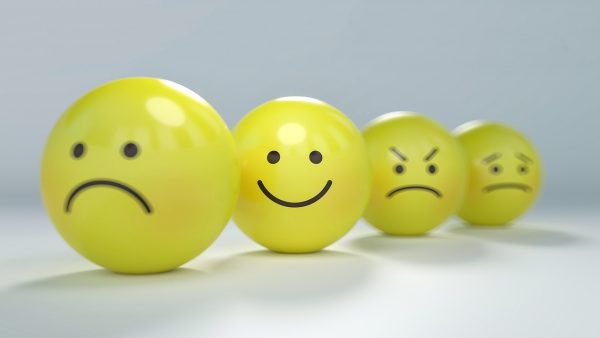The psychology of gratefulness

As a creative writer, I am always on the prowl for a good story.
“With Thanksgiving approaching, gratitude would be a good subject,” I thought. “Better yet, the psychology of gratefulness.”
It seemed like an appropriate subject for the season. I went on my merry way, researching and reaching out to experts. I already mapped out how the article would look and feel but threw those plans out the window when I started talking to Sara Levens. Instead, I learned something far more valuable.
Levens is an associate professor in the Department of Psychological Science and coordinator for the Behavioral Science Health Psychology doctoral program at UNC Charlotte. Her background includes cognitive and affective neuroscience and emotion research in the context of social media, mental health, health psychology and behavior change.
I asked Levens, “How do negative emotions get in the way of being grateful or happy?” I was looking for her to give the solution that would push all negativity aside and lead to a path of grateful thought processes. Besides, I needed some tips for Thanksgiving dinner conversation.
“So that idea of how negative emotions get in the way is interesting because shows a false understanding of emotion,” said Levens. “They’re viewed as just not as good as positive emotions, but that’s not how emotions exist within your body. Emotions are there to guide your behavior.”
As we continued discussing the idea of demonizing negative emotions, like fear, disgust or sadness, it became clear that the mere act of doing this only suppresses messages that the mind tries to communicate. Emotion isn’t meant to be good or bad. It’s meant to tell us about our environment, situation or life circumstances. It’s crucial to understand ourselves better, work through emotional issues and move toward gratitude.
“You need your fear response,” explained Levens. “Fear, among other negative emotions, gets a seriously bad rap. They’re just viewed as this distraction towards happiness and gratitude. We have to ask ourselves what the real barrier is. It’s us ignoring, not processing negative emotions, and not recognizing their value.”
What does it take to recognize the value of emotion? It comes down to recognizing the role of emotion in your life and how they work for you. How people process and interpret emotions varies depending on the individual and their upbringing and environment. The role of upbringing and environment in understanding one’s emotions is huge. It’s the classic nurture versus nature environment, and Levens emphasized nurture in our conversation.
“Children learn emotion regulation strategies from their parents. If their parents don’t know healthy emotion regulation strategies, they just know unhealthy ones,” said Levens. “You’re not born out of the womb being someone who is going to suppress all of your emotions and not share.”
I pushed further. “So, you think it’s just a lack of self-awareness?”
“Lack of self-awareness is huge. If you sit there and think about how you shouldn’t be feeling negative all the time, then step back and remember you should be feeling negative sometimes,” explained Levens. “We’re designed negative emotions. If we’re just happy and content all the time, we stay in a space of low motivation and miss important information about ourselves and our environment.”
This was contrary to my thought process, but it made sense. She explained that if we’re comfortable and content with our current state, it’s harder to work towards new goals that require passion and motivation, such as creating inventions or solving real-world problems and suffering, or striving towards growth in life. Part of moving forward is to be self-aware of what you’re thinking. We discussed the importance of sharing and expressing emotions in some way. Journaling and sharing with others make our brains process important emotions and thoughts. The role of busyness in our lives often leads us to take on a maladaptive strategy like suppressing our emotions. By pushing aside our negative emotions, they can overflow and become tangled, and affect our mental and physical health. Negative emotion and positive emotions exist together to work together, continually changing based on our changing needs and circumstances
Levens had sufficiently laid the groundwork for our discussion on gratitude and continued to explain gratitude’s connection to negative emotion.
When you have gratitude, it comes through experiencing negative things,” said Levens. “When you’re finished going through it, you’ve made it to the other side, and then gratitude grows as you have sufficient empathy for yourself and others.”
After my time with Levens, I learned that negative emotions are not obstacles to gratitude; they are the key. Working through negative emotions, rather than ignoring them, opens the door to gratitude and knowing oneself, and happiness can grow in this space. Instead of embracing the hustle and bustle of the holidays, sit with your emotions, journal, think and talk to a trusted friend. That’s what I’ll be doing this holiday season.